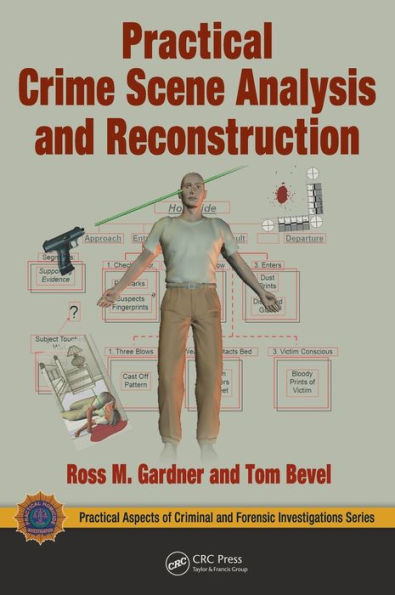A proven methodology
The book begins by recounting the history of crime scene analysis and exploring fundamental principles. Then the authors introduce their proven methodology, known as Event Analysis. This technique defines specific actions, discusses the order of those actions, and offers significant insight into determining what did or did not happen in the course of the incident under investigation. Using case studies and more than 200 color photos, the book demonstrates this method and how it can be used to explain clues that would otherwise be puzzling or ambiguous.
Practical advice from the crime scene to the courtroom
The authors show how to resolve significant questions that arise in the course of CSR through the use of an event analysis worksheet. The book also discusses crime scene protocol, bloodstain pattern analysis, gunshot investigation, and forensic pathology and the human body. The final chapters provide instruction on writing crime scene reports, discuss ethical issues, and give advice on courtroom presentation.
Includes color photos demonstrating the science of CSR on:
- Superposition
- Timing and sequence
- Bloodstain analysis
- Ballistics
- Wound patterns
A proven methodology
The book begins by recounting the history of crime scene analysis and exploring fundamental principles. Then the authors introduce their proven methodology, known as Event Analysis. This technique defines specific actions, discusses the order of those actions, and offers significant insight into determining what did or did not happen in the course of the incident under investigation. Using case studies and more than 200 color photos, the book demonstrates this method and how it can be used to explain clues that would otherwise be puzzling or ambiguous.
Practical advice from the crime scene to the courtroom
The authors show how to resolve significant questions that arise in the course of CSR through the use of an event analysis worksheet. The book also discusses crime scene protocol, bloodstain pattern analysis, gunshot investigation, and forensic pathology and the human body. The final chapters provide instruction on writing crime scene reports, discuss ethical issues, and give advice on courtroom presentation.
Includes color photos demonstrating the science of CSR on:
- Superposition
- Timing and sequence
- Bloodstain analysis
- Ballistics
- Wound patterns

Practical Crime Scene Analysis and Reconstruction
304
Practical Crime Scene Analysis and Reconstruction
304Hardcover(New Edition)
Related collections and offers

Product Details
| ISBN-13: | 9781420065510 |
|---|---|
| Publisher: | Taylor & Francis |
| Publication date: | 06/26/2009 |
| Series: | Practical Aspects of Criminal and Forensic Investigations , #49 |
| Edition description: | New Edition |
| Pages: | 304 |
| Product dimensions: | 7.00(w) x 10.10(h) x 0.70(d) |
